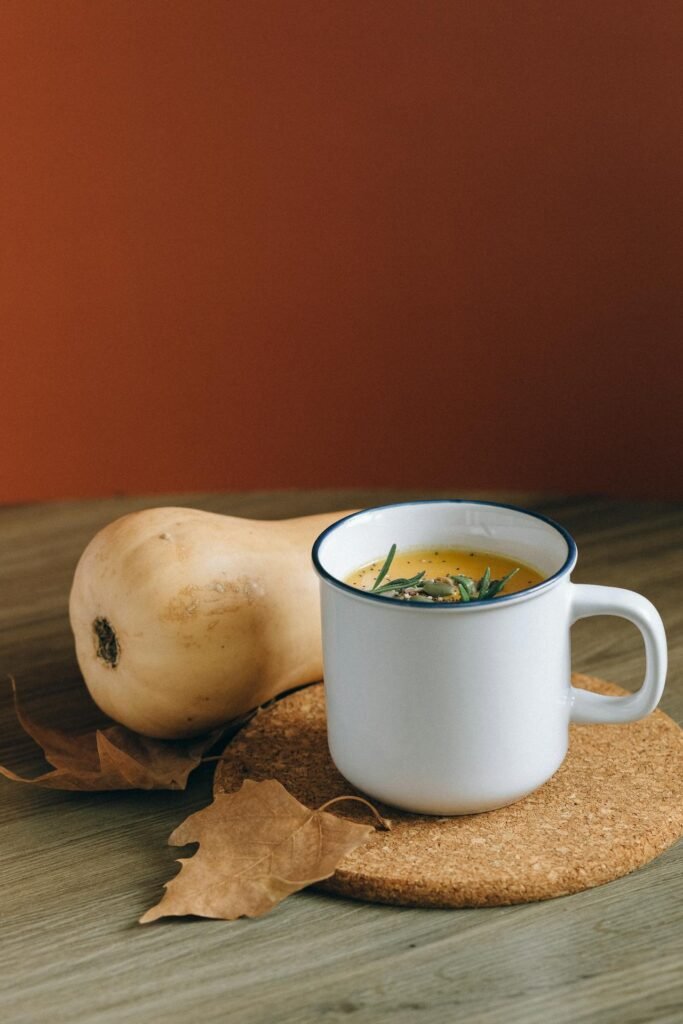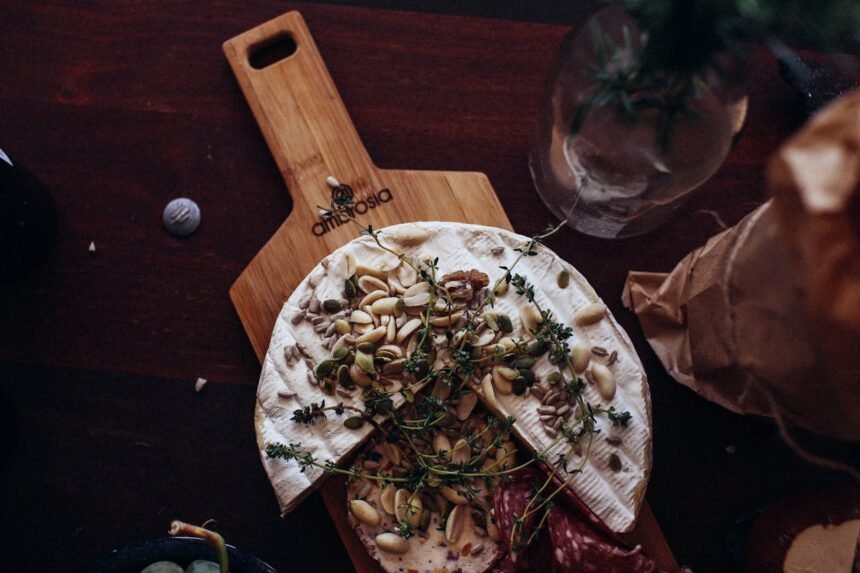Pumpkin seeds have long been cherished as a nutritious and delicious snack, but what about their shells? Can you eat pumpkin seed shells, or should they be discarded? This comprehensive article will delve into the world of pumpkin seed shells, exploring their potential benefits, risks, and everything in between.
We’ll also compare pumpkin seed shells to other seed shells and address common questions about their consumption. Whether you’re a health enthusiast or simply curious, this article provides valuable insights into making the most of your pumpkin seeds, shells and all.
Understanding Pumpkin Seed Shells: Can You Eat Them?
Can you eat pumpkin seed shells? This question has puzzled many snack enthusiasts and health-conscious individuals alike. Pumpkin seed shells, also known as husks, are the tough, fibrous outer covering of pumpkin seeds. While many people discard these shells, they are indeed edible and can offer some surprising nutritional benefits.
Pumpkin seed shells are primarily composed of cellulose, a type of insoluble fibre that can aid in digestion. They also contain small amounts of minerals such as zinc, iron, and magnesium. However, it’s important to note that the shells are much tougher and less palatable than the inner seed kernels.
One common misconception is that pumpkin seed shells are indigestible or harmful to consume. While they are more challenging to digest than the inner seeds, they can be safely eaten when prepared properly. The key lies in proper roasting and seasoning, which can make the shells more enjoyable to eat.
Can you eat pumpkin seed shells raw? While it’s technically possible, it’s not recommended due to their tough texture and potential choking hazard. Roasting the shells not only improves their flavour but also makes them easier to chew and digest.
Nutritional Benefits of Eating Pumpkin Seed Shells: Can You Reap the Rewards?
Can you eat pumpkin seed shells for their nutritional benefits? Absolutely! Pumpkin seed shells offer several nutritional advantages that make them worth considering as part of your diet.
Fibre Content: The most significant benefit of eating pumpkin seed shells is their high fibre content. Fibre is essential for maintaining a healthy digestive system, promoting regular bowel movements, and supporting gut health. Consuming the shells along with the seeds can significantly increase your fibre intake.
Mineral Content: Pumpkin seed shells contain trace amounts of important minerals such as:
- Zinc: Supports immune function and wound healing
- Iron: Essential for oxygen transport in the blood
- Magnesium: Important for muscle and nerve function
Antioxidants: The shells may contain antioxidants that help protect your cells from damage caused by free radicals.
Low in Calories: Adding pumpkin seed shells to your diet can increase the volume of your snack without significantly increasing calorie intake, potentially aiding in weight management.
Can you eat pumpkin seed shells to boost your overall nutrient intake? While they shouldn’t be relied upon as a primary source of nutrients, they can certainly complement a balanced diet and provide additional fibre and minerals.
Potential Health Risks of Eating Pumpkin Seed Shells: Can You Consume Them Safely?
While pumpkin seed shells offer nutritional benefits, it’s crucial to consider potential risks. Can you eat pumpkin seed shells without any concerns? Here are some factors to keep in mind:
Choking Hazard: The tough, fibrous nature of pumpkin seed shells can pose a choking risk, especially if not chewed thoroughly. This risk is particularly high for children and elderly individuals.
Digestive Issues: Some people may experience digestive discomfort when consuming pumpkin seed shells due to their high fibre content. This can include bloating, gas, or abdominal pain, especially if consumed in large quantities.
Dental Concerns: The hard texture of the shells might potentially damage dental work or cause discomfort for those with sensitive teeth.
Pesticide Exposure: If the pumpkin seeds are not organic, there’s a possibility that pesticide residues could be present on the shells. Thoroughly washing and roasting the seeds can help mitigate this risk.
Phytic Acid: Pumpkin seed shells contain phytic acid, which can interfere with the absorption of certain minerals. However, this is generally only a concern if consumed in very large quantities.
Can you eat pumpkin seed shells safely? For most healthy adults, moderate consumption of properly prepared pumpkin seed shells is generally safe. However, if you have any existing digestive issues or concerns, it’s advisable to consult with a healthcare professional before adding them to your diet.

How to Prepare and Eat Pumpkin Seed Shells: Can You Make Them Tasty?
Can you eat pumpkin seed shells in a way that’s both safe and delicious? Absolutely! The key lies in proper preparation and seasoning. Here’s a guide to help you enjoy pumpkin seed shells:
- Cleaning: Start by thoroughly washing the pumpkin seeds to remove any pulp or debris. This step is crucial for both hygiene and taste.
- Drying: Pat the seeds dry with a clean towel or paper towel. This helps ensure crispy results when roasting.
- Seasoning: Toss the seeds with a bit of oil and your favourite seasonings. Popular options include salt, pepper, garlic powder, or even sweet spices like cinnamon for a unique twist.
- Roasting: Spread the seasoned seeds in a single layer on a baking sheet. Roast at 150°C (300°F) for about 45 minutes, stirring occasionally, until golden brown and crispy.
- Cooling: Allow the roasted seeds to cool completely before eating. This enhances their crunchiness.
Can you eat pumpkin seed shells raw? While it’s possible, roasting greatly improves their texture and flavour, making them much more enjoyable to eat.
Tips for Easier Consumption:
- Chew thoroughly to avoid any choking risk
- Start with small quantities to see how your digestive system responds
- Pair with other foods to create a balanced snack
Remember, can you eat pumpkin seed shells safely largely depends on proper preparation and mindful consumption.
Creative Ways to Use Pumpkin Seed Shells in Cooking: Can You Incorporate Them into Meals?
Can you eat pumpkin seed shells in creative and delicious ways? Absolutely! Here are some innovative ideas to incorporate pumpkin seed shells into your culinary repertoire:
1. Crunchy Topping: Crush roasted pumpkin seeds with shells and use them as a crunchy topping for salads, soups, or roasted vegetables.
2. Breading Alternative: Grind roasted pumpkin seeds with shells to create a gluten-free breading for chicken or fish.
3. Pesto Twist: Add some ground pumpkin seeds with shells to your favourite pesto recipe for extra texture and nutritional boost.
4. Granola Ingredient: Incorporate whole roasted pumpkin seeds with shells into your homemade granola mix for added crunch.
5. Smoothie Booster: Grind roasted pumpkin seeds with shells and add a spoonful to your morning smoothie for extra fibre.
Recipe: Pumpkin Seed Shell Crusted Chicken
Ingredients:
- 2 chicken breasts
- 1 cup roasted pumpkin seeds with shells, finely ground
- 1 egg, beaten
- Salt and pepper to taste
Instructions:
- Preheat oven to 180°C (350°F)
- Dip chicken in beaten egg, then coat with ground pumpkin seeds
- Bake for 25-30 minutes until chicken is cooked through
Can you eat pumpkin seed shells in all these ways? Yes, but remember to introduce them gradually into your diet and pay attention to how your body responds.
Pumpkin Seed Shells vs. Other Seed Shells: Can You Eat Them All?
When considering whether you can eat pumpkin seed shells, it’s natural to wonder about other seed shells as well. Let’s compare pumpkin seed shells with other common seed shells:
| Seed Type | Edible Shell? | Taste | Texture | Nutritional Value |
|---|---|---|---|---|
| Pumpkin | Yes | Mild | Crunchy | High in fibre |
| Sunflower | No | Bitter | Woody | Indigestible |
| Watermelon | Yes | Mild | Crunchy | High in nutrients |
| Squash | Yes | Mild | Crunchy | Similar to pumpkin |
Can you eat pumpkin seed shells compared to other seed shells? As you can see, pumpkin seed shells are among the more edible and nutritious options.
Sunflower Seed Shells: Unlike pumpkin seed shells, sunflower seed shells are not typically eaten. They are extremely tough and can cause digestive issues if consumed.
Watermelon Seed Shells: Similar to pumpkin seeds, watermelon seeds with their shells are edible and nutritious when roasted.
Squash Seed Shells: These are very similar to pumpkin seed shells in terms of edibility and nutritional value.
Can you eat pumpkin seed shells with the same confidence as other edible seed shells? Generally, yes. Pumpkin seed shells are among the more palatable and beneficial seed shells to consume.
FAQ: Can You Eat Pumpkin Seed Shells?
- Can you eat raw pumpkin seed shells?
While technically edible, raw pumpkin seed shells are tough and not very palatable. Roasting is recommended for better taste and texture. - Are pumpkin seed shells hard to digest?
They can be more challenging to digest than the inner seeds due to their high fibre content. Proper chewing and moderate consumption are key. - What are the benefits of eating pumpkin seed shells?
Pumpkin seed shells are high in fibre and contain small amounts of minerals like zinc and iron. - How can I make pumpkin seed shells easier to chew?
Roasting the seeds makes the shells crispier and easier to chew. Proper seasoning can also enhance palatability. - Are there any dietary restrictions on eating pumpkin seed shells?
People with digestive issues or difficulty swallowing should be cautious. Always consult a healthcare provider if you have concerns.
Conclusion: Can You Eat Pumpkin Seed Shells?
In conclusion, can you eat pumpkin seed shells? The answer is a resounding yes, but with some important considerations. Pumpkin seed shells are not only edible but can also offer nutritional benefits, primarily in the form of dietary fibre.
Throughout this article, we’ve explored various aspects of consuming pumpkin seed shells. We’ve learned that while they are safe to eat for most people, they should be properly prepared – preferably roasted – to enhance their taste and digestibility. We’ve also discovered creative ways to incorporate them into our diets and compared them with other seed shells.
However, it’s crucial to remember that moderation is key. While pumpkin seed shells can be a healthy addition to your diet, they should not be consumed in excess. Some individuals may experience digestive discomfort, and there’s always a slight risk of choking if not chewed properly.
So, can you eat pumpkin seed shells? Absolutely. They offer a crunchy, fibre-rich addition to your snacks and meals. But as with any dietary change, listen to your body and consult with a healthcare professional if you have any concerns. Happy snacking!

Can you eat pumpkin seed shells? This comprehensive guide explores the benefits and risks of consuming pumpkin seed shells.
Discover the nutritional value, potential health impacts, and creative ways to incorporate these often-discarded parts into your diet.
Learn about proper preparation methods, cultural perspectives, and how eating pumpkin seed shells can contribute to reducing food waste.
Historical and Cultural Perspectives: Can You Eat Pumpkin Seed Shells Across Different Cultures?
The question “Can you eat pumpkin seed shells?” has different answers depending on cultural and historical contexts. Pumpkins, native to North America, have been cultivated for thousands of years, and different cultures have developed various ways of consuming pumpkin seeds, including their shells.
In Mexico, for instance, pumpkin seeds with shells, known as “pepitas”, have been a staple food since ancient times. The Aztecs and other Mesoamerican cultures not only consumed pumpkin seed shells but also used them for medicinal purposes. They believed that pumpkin seeds, including their shells, had healing properties and could help with various ailments.
In parts of the Middle East and Mediterranean, roasted pumpkin seeds with shells are a popular snack, often sold by street vendors. The shells are typically left on, and people enjoy the extra crunch and fibre they provide.
In contrast, many Western cultures have traditionally removed the shells before consuming pumpkin seeds. This practice likely developed due to the perception that the shells were inedible or less palatable.
Can you eat pumpkin seed shells in the same way across all cultures? The answer varies, but it’s clear that many cultures have embraced the whole seed, shell and all, as a nutritious food source.
The Science Behind Pumpkin Seed Shells: Can You Eat Them for Their Phytochemicals?
Can you eat pumpkin seed shells for their unique chemical composition? Let’s delve into the science behind these often-discarded parts of the pumpkin seed.
Pumpkin seed shells contain various phytochemicals, which are biologically active compounds found in plants. These include:
- Lignans: These are polyphenolic compounds that have antioxidant properties and may help reduce the risk of certain cancers.
- Phytosterols: These plant compounds have a structure similar to cholesterol and may help lower blood cholesterol levels.
- Phenolic compounds: These act as antioxidants and may have anti-inflammatory properties.
The shells also contain small amounts of essential minerals:
- Zinc: Important for immune function and wound healing
- Iron: Crucial for oxygen transport in the blood
- Magnesium: Necessary for muscle and nerve function
Can you eat pumpkin seed shells to benefit from these compounds? While more research is needed to fully understand the bioavailability of these compounds when consumed in shell form, incorporating pumpkin seed shells into your diet may provide additional nutritional benefits beyond just fibre.
Environmental Impact: Can You Eat Pumpkin Seed Shells to Reduce Food Waste?
In an era where sustainability is increasingly important, can you eat pumpkin seed shells as a way to reduce food waste? The answer is a resounding yes, and doing so can have several positive environmental impacts.
Reducing Food Waste: By consuming the entire pumpkin seed, including the shell, we’re utilising more of the plant and reducing waste. This aligns with the principles of “nose-to-tail” eating, but applied to plant foods.
Maximising Resource Use: Growing pumpkins requires resources like water, soil nutrients, and energy. By eating the shells along with the seeds, we’re getting more nutritional value from these invested resources.
Composting Alternative: While pumpkin seed shells can be composted, eating them provides immediate nutritional benefits and reduces the energy required for composting.
Can you eat pumpkin seed shells as part of a more sustainable diet? Absolutely. It’s a small step that, when adopted by many, can contribute to reducing food waste and maximising the use of our food resources.
Pumpkin Seed Shells in Pet Diets: Can You Feed Them to Your Furry Friends?
As we explore whether humans can eat pumpkin seed shells, it’s natural to wonder about our pets. Can you feed pumpkin seed shells to dogs, cats, or other pets?
Dogs: While pumpkin flesh and seeds can be beneficial for dogs in moderation, the shells are not recommended. They can be difficult for dogs to digest and may cause intestinal blockages or other digestive issues.
Cats: Similar to dogs, cats should not be fed pumpkin seed shells. Their digestive systems are not designed to process such fibrous material.
Birds: Many bird species can safely eat pumpkin seeds with shells. In fact, the shells can provide beneficial fibre for their diet.
Rodents: Small pets like hamsters and gerbils can often eat pumpkin seeds with shells, which can help wear down their constantly growing teeth.
Can you feed pumpkin seed shells to all pets? No, it’s important to research what’s safe for your specific pet and consult with a veterinarian if you’re unsure.
Pumpkin Seed Shell Supplements: Can You Eat Them in Pill Form?
In recent years, various supplements derived from pumpkin seeds have entered the market. But can you eat pumpkin seed shells in supplement form, and are there benefits to doing so?
Some supplement manufacturers have begun producing pumpkin seed shell powder or extracts, claiming benefits such as:
- Improved digestive health due to high fibre content
- Potential prostate health benefits
- Possible aid in parasite elimination
However, it’s important to note that these claims are often based on traditional uses or preliminary studies, and more research is needed to confirm their efficacy.
Can you eat pumpkin seed shells in supplement form safely? While generally considered safe, it’s crucial to:
- Choose reputable supplement brands
- Follow recommended dosages
- Consult with a healthcare provider before starting any new supplement regimen
Remember, whole food sources are often preferable to supplements, so eating pumpkin seeds with shells in their natural form may be the best approach for most people.
Conclusion: The Final Verdict on Eating Pumpkin Seed Shells
As we conclude our extensive exploration, let’s revisit our central question: Can you eat pumpkin seed shells? The answer, as we’ve discovered, is multifaceted but generally positive.
Pumpkin seed shells are indeed edible and can offer several benefits:
- They’re a good source of dietary fibre
- They contain beneficial phytochemicals and minerals
- Eating them reduces food waste
However, there are some considerations to keep in mind:
- They should be properly prepared, preferably roasted, for best taste and digestibility
- Some people may experience digestive discomfort, especially if consumed in large quantities
- They’re not suitable for all pets
Can you eat pumpkin seed shells as part of a healthy diet? For most people, the answer is yes. They can be a nutritious addition to your meals and snacks when consumed in moderation and prepared properly.
As with any dietary change, it’s always wise to listen to your body and consult with a healthcare professional if you have any concerns. Whether you’re sprinkling them on salads, incorporating them into baked goods, or simply enjoying them as a crunchy snack, pumpkin seed shells can be a tasty and nutritious way to make the most of this versatile seed.
So the next time you’re enjoying pumpkin seeds, consider giving the shells a try. You might just discover a new favourite snack that’s as good for you as it is for the environment.
: https://www.ncbi.nlm.nih.gov/pmc/articles/PMC6270863/
: https://www.ncbi.nlm.nih.gov/pmc/articles/PMC5486113/
: https://www.ncbi.nlm.nih.gov/pmc/articles/PMC6270863/
: https://www.akc.org/expert-advice/nutrition/can-dogs-eat-pumpkin/






